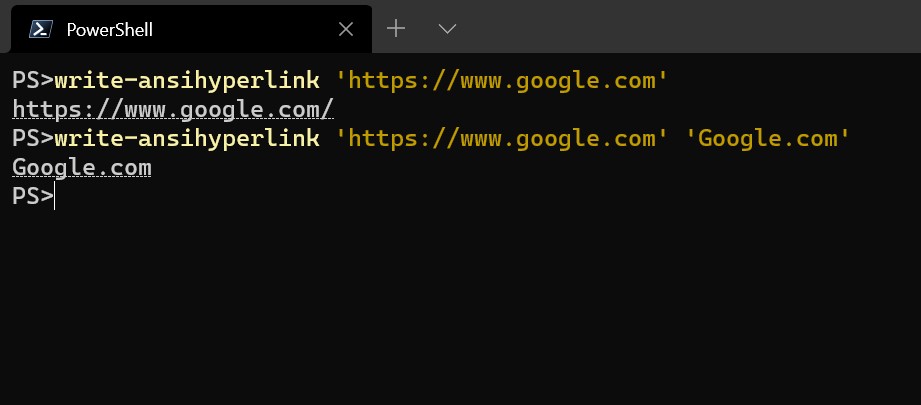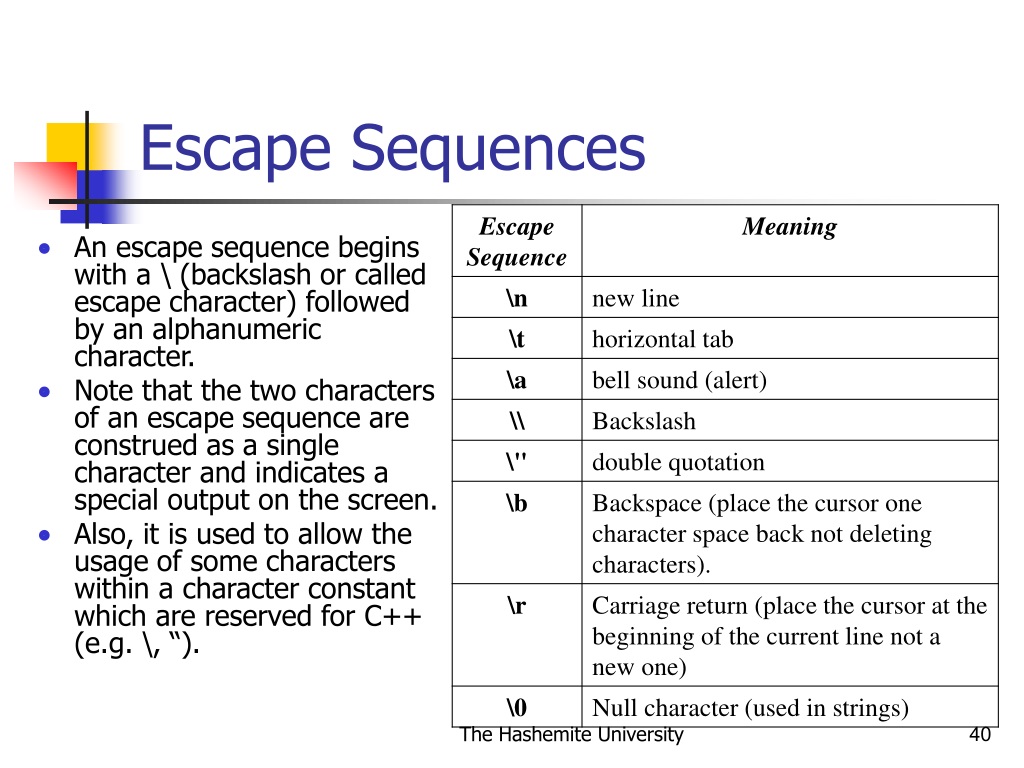

The remaining codes define what it is to be changed to.Į.g.
#ANSI ESCAPE SEQUENCES FUNCTION KEYS CODE#
The first ASCII code defines which code is to be changed. So escape sequences are formed using two things: the first is a backslash (), and the second is the set of one or more characters following that backslash (). ESC code sequenceĬlear from cursor to beginning of the screenĬlear screen and home cursor (moves cursor to upper left)Ĭlear from cursor to beginning of the lineĬlear entire line. Wherever you see '#', that should be replaced by the appropriate number. In practice, the computer is hugely faster than a mere human, so. If it doesn't find any more characters, it uses select () as before to decide whether there are more characters in an ESC sequence or if this is a standalone ESC. While this is not actually an ANSI code sequence, worlds usually group this with them. If it finds one and there is any data left, then it reports the escape sequence (presumably a function key sequence). This will cause an audible alert sound, if configured to do so in the Preferences. In addition, the ASCII BEL character (value 7) is internally translated to the HTML sequence. The incorrect [2m code for bold off is supported for backwards compatibility, along with the correct [22m code. (High-intensity colors are brighter than low-intensity ones, which are the default.) If you want the bold font style, you will have to use the tag instead. Im talking about 7 bit VT100 escape sequences for single keys (which in turn require millisecond-accurate timing code in e.g. But the function can only read arrow keys currently and I want to add the control/alternate combinations, function keys, home, insert, etc. I have tested my function and it reads the arrow keys properly. In version 2.50 and later, bold is interpreted as 'high-intensity', which was the original ANSI definition. I am writing a function that reads ANSI escape sequences generated by keys and returns a macro corresponding to the key entered. In addition, the code [2m was mistakenly interpreted as bold off and the correct code was not handled. In client version 2.01 and earlier, bold was interpreted as the physical bold style - equivalent to the HTML tag. The bold codes have been given two different interpretations: Inverse on reverses foreground & background colors Reset clears all colors and styles (to white on black) If the version is shown as "-", then it was introduced in version 2.01 or earlier (exact information is not available).Īn ANSI code is sent by the world by sending an escape character ( ESC, ASCII value 27) followed by the appropriate code sequence: Code: If we have a control character, it is acted upon immediately and then discarded (even in the middle of an escape sequence) and the escape sequence continues. This is a list of those codes currently supported by Pueblo/UE, together with which client version they were introduced in. Pueblo/UE supports a wide range of ANSI color codes.

One such standard is commonly referred to. The C shell and all the utilities that come with it generate these ANSI escape sequences when writing to a file or pipe. Many computer terminals and terminal emulators support colour and cursor control through a system of escape sequences.

More than one change can be specified by using semicolons between each g value: (The idea is to ignore an echoed function key.) The action of a CSI sequence is determined by its final character. However, after CSI (or ESC ) a single character is read and this entire sequence is ignored. Set cursor position, counting from (1, 1) in the upper left-hand corner.Įrase display and move cursor to upper left-hand corner. The sequence of parameters may be preceded by a single question mark. In this table, Esc refers to the 0x1B escape character.


 0 kommentar(er)
0 kommentar(er)
